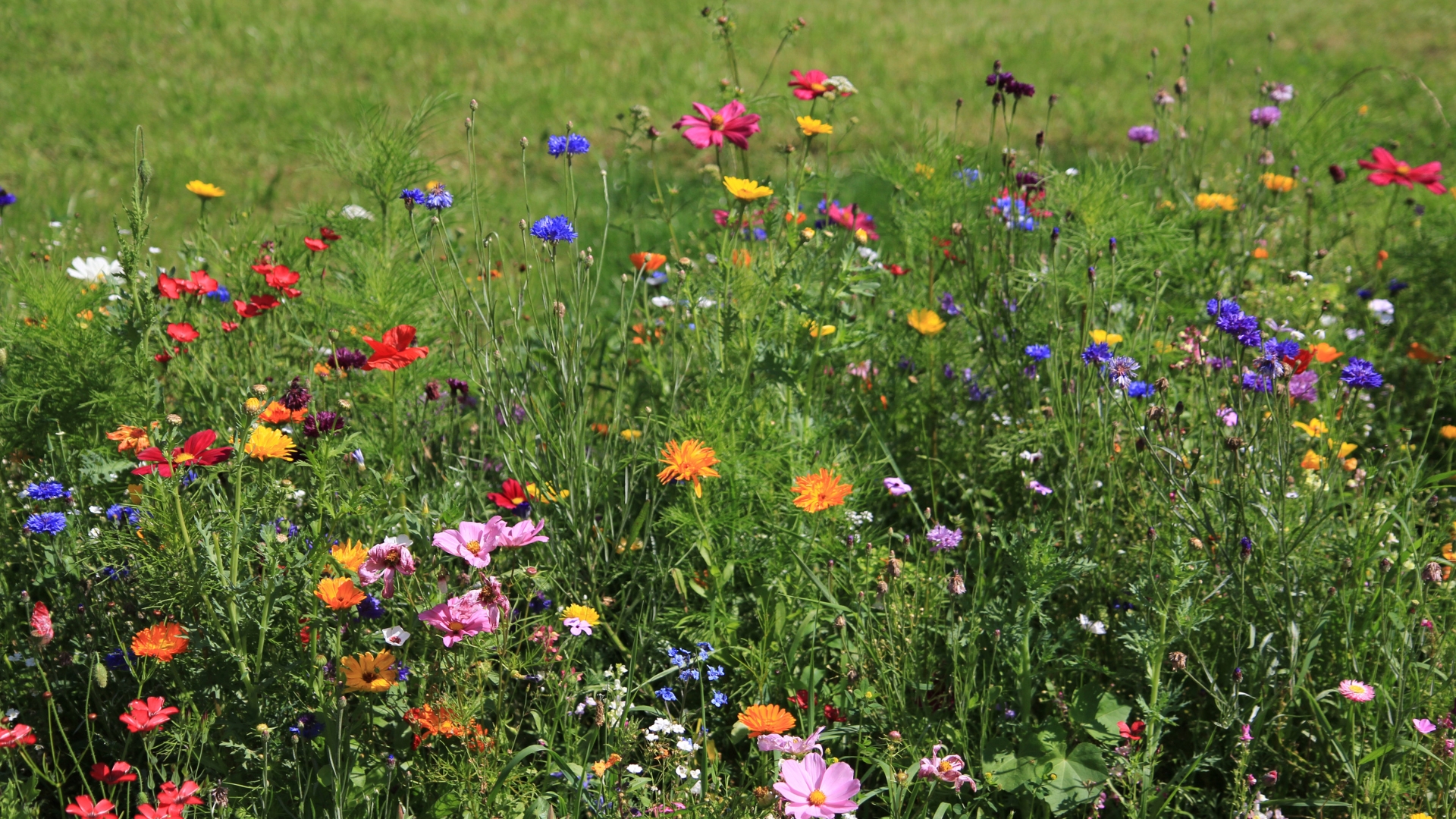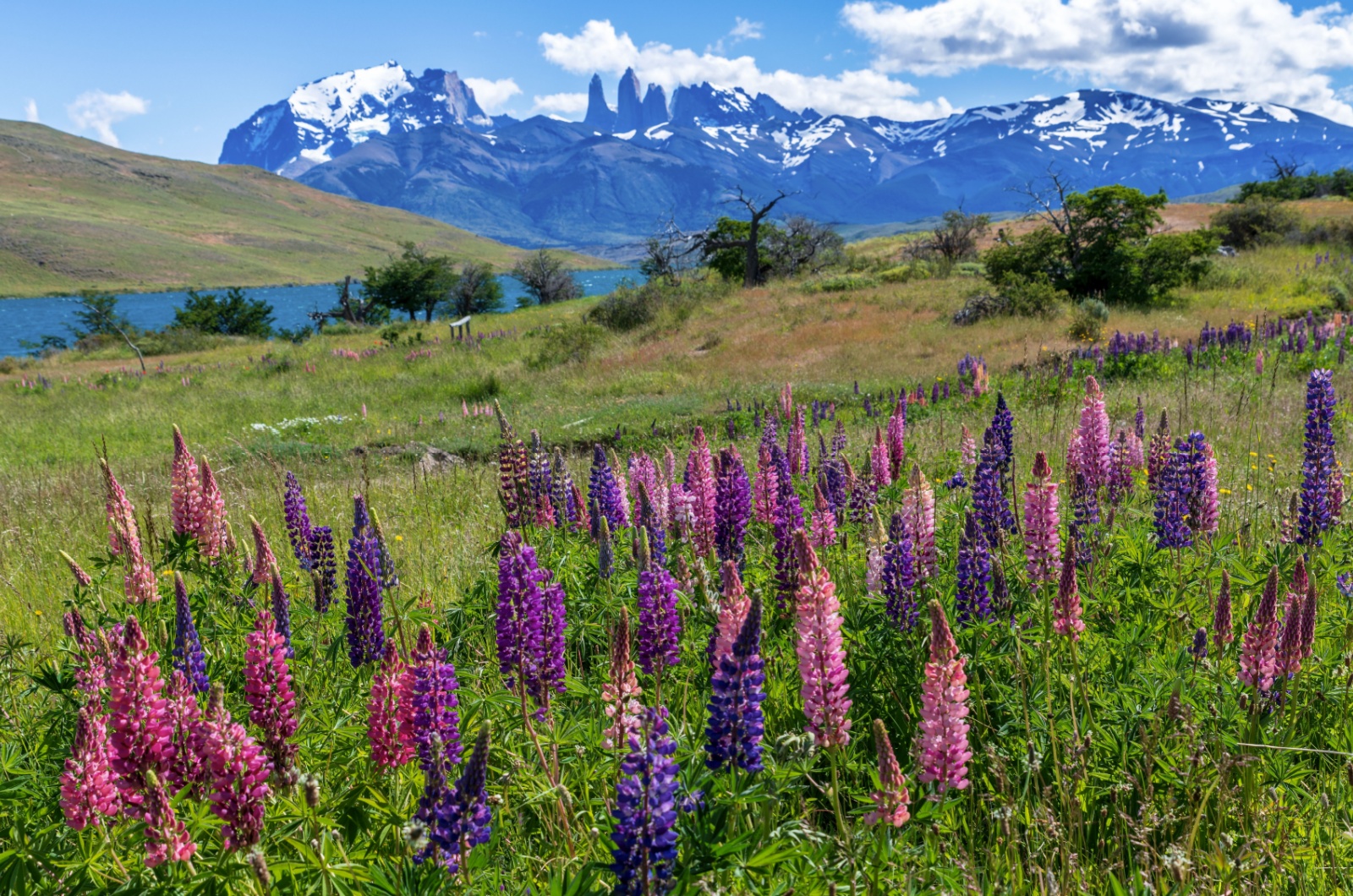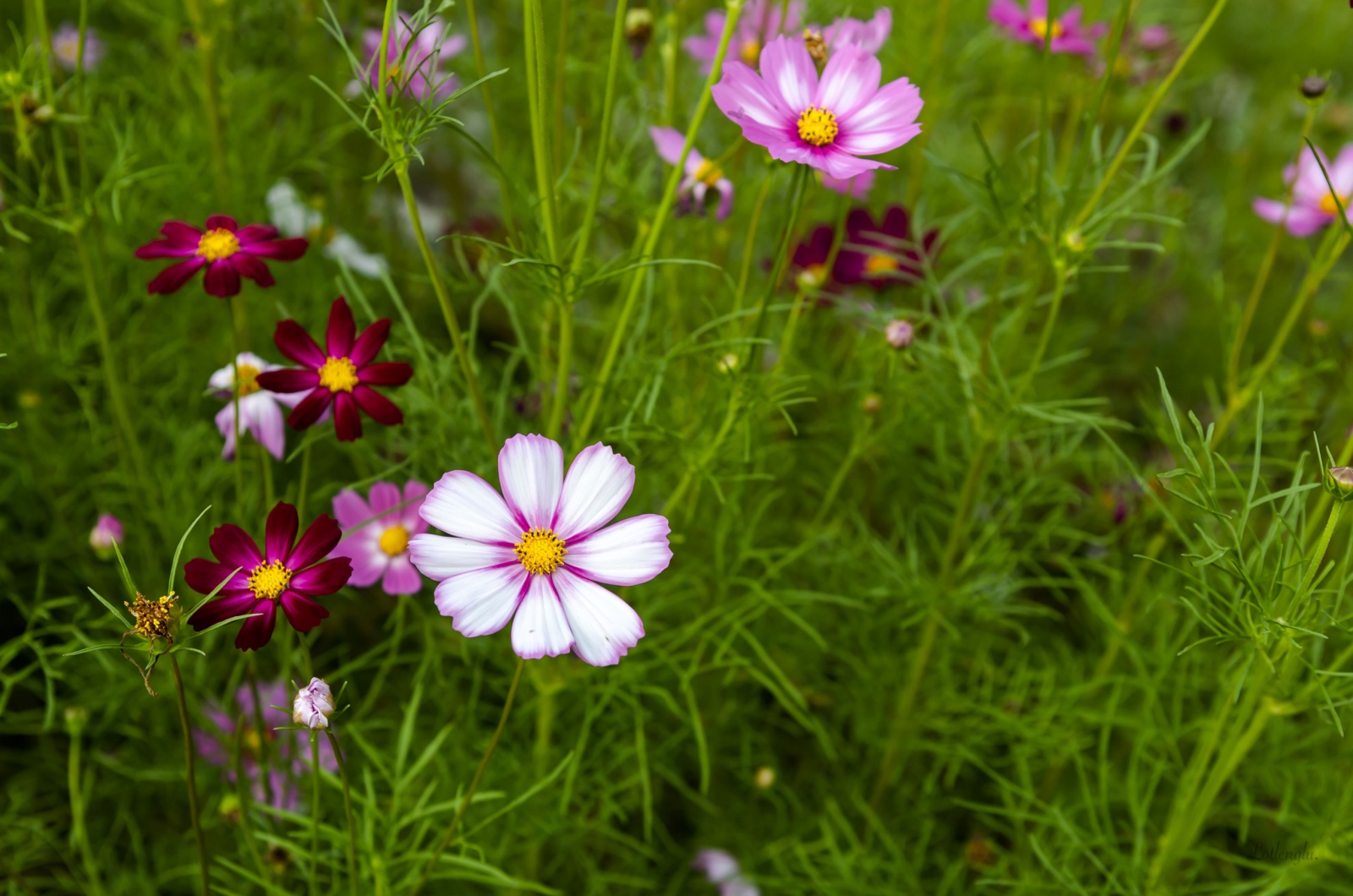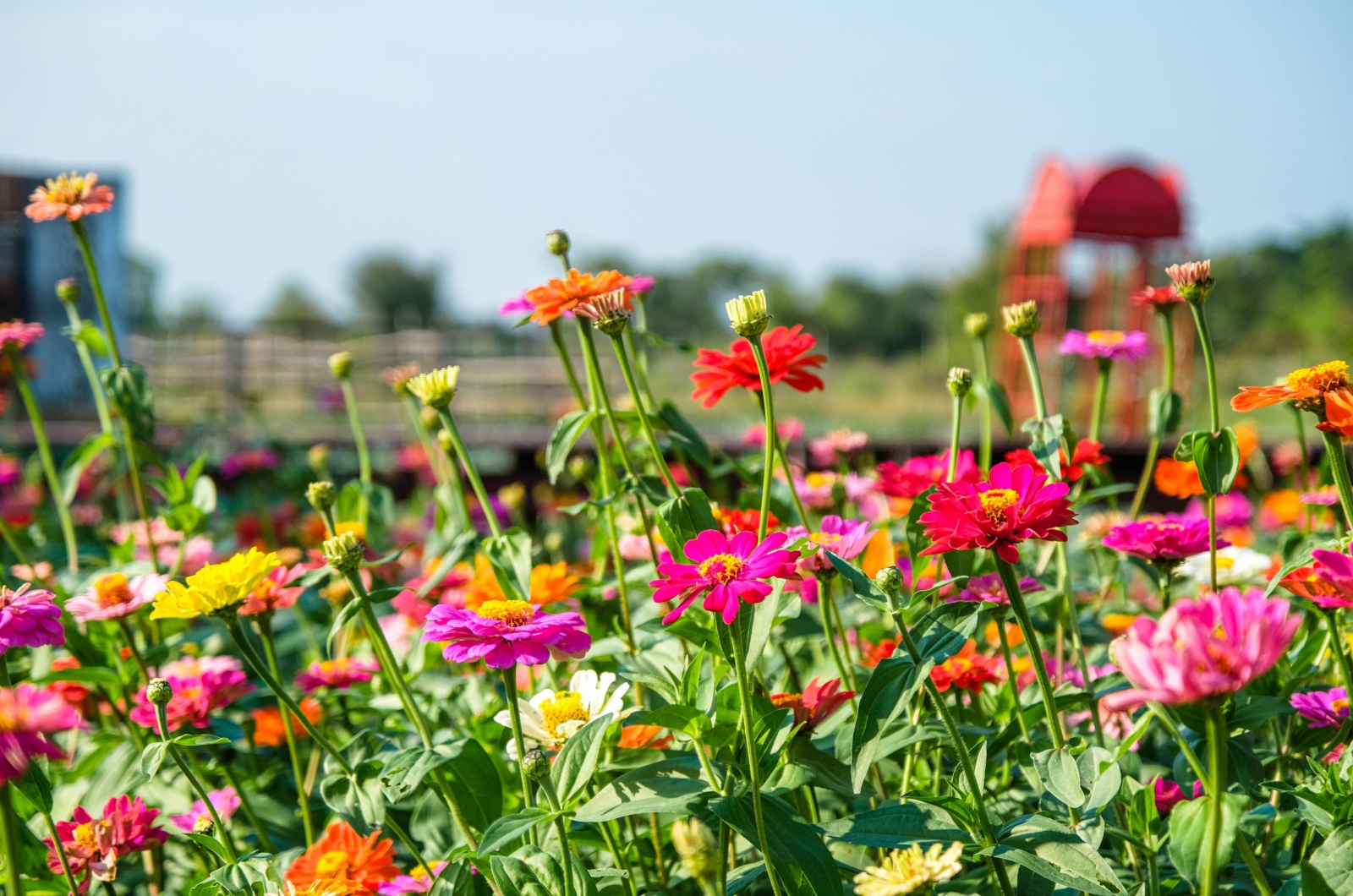Gardeners meticulously plan their gardens nowadays, and everything looks well-maintained and polished. Don’t get me wrong, I think it’s a beautiful thing, but I’m into more natural designs.
And the best way to achieve this design is to plant wildflowers. It’s not only about the beauty but also about the benefits these spectacular plants bring to our outdoor space.
Wildflowers are true magnets for pollinators and are super easy to maintain, making them perfect for novices.
What I especially like about these species is that the majority can reseed, which means you won’t need to plant them every year.
Now the only question we need to answer is, when to plant wildflower seeds? The short answer is in fall or spring but there’s way more to discuss since some varieties are cold-hardy and some are heat-loving.
Ready to embark on this amazing journey? I won’t keep you any longer!
Sowing Cold-Hardy Wildflowers
The first group of wildflowers I’ll tell you more about are cold-resistant varieties. The best time to plant them is in the fall and their seeds typically emerge at the beginning of spring.
For me, it’s fascinating how they can bloom even if their seeds stay on the soil surface all winter long. These wildflower seeds need a period of cold stratification to germinate successfully.
They’re basically annuals but they behave as perennials since they reseed, which means new blossoms come year after year. Coneflowers and bachelor’s buttons are just a few examples of such species.
You may hear that these plants are invasive but that’s not the term I would use to describe them. They do spread pretty fast but that’s only because they produce new plants from seeds.
Their roots aren’t too deep and they won’t take over your garden like a ‘true’ invasive species. You can simply pull them out of the ground when young and eliminate them quickly.
However, two plants don’t fall into this category and can be very hard to remove: the notorious Black-eyed Susans and false sunflowers. I’ve learned the hard way and it took me a lot of time to remove all the Black-eyed Susans that spread uncontrollably.
But that wasn’t my fault. I bought the standard wildflower mix and didn’t know it contained this invasive plant. So, I would check twice before purchasing these mixes if I were you.
It’s always better to go with classics, such as columbines, blanket flowers, California poppies, and the abovementioned cornflowers and bachelor’s buttons.
Why Sow Wildflowers In The Fall?
I always plant my wildflowers in fall and there are a few reasons for it. First, I don’t have a lot of issues with weeds since my wildflowers emerge early in the spring and block the way for weeds to develop (work smart, not hard!).
Of course, the second reason is that I have a spectacular flower display earlier than I would if I planted wildflowers in spring.
Fall planting is also a better option for those who live in regions with dry summers. The seeds have enough moisture in winter to germinate easily.
I typically wait until a few hard frosts hit my area before planting the seeds. It helps them go into dormancy and experience cool temperatures before germinating when spring approaches.
Never sow the seeds on a windy day because the last thing you want is to have them all over your yard (don’t ask how I know).
When planting your wildflowers, simply rake the soil surface, scatter the seeds, and lightly cover them with soil.
Most fall-planted seeds will germinate as soon as the temperatures hit 55 degrees Fahrenheit.
Lobelias, borage, lupines, and calendula are the top choices for fall-planting.
Here Are The Annual Wildflowers Suitable For Warmer Climates
My fellow gardeners from east Texas, southern California, and other warmer zones, I have something important to tell you!
You should be more careful when selecting your wildflowers and select the ones that can tolerate warmer temperatures.
The good news is that you still have a lot of varieties to choose from. And some can even become perennials if winters in your area are mild.
For instance, marigolds and cosmos are plants that do extremely well even during hot sunny days.
Black-eyed Susans can also tolerate high temperatures but I already mentioned that they can be invasive. If you’re really into such blossoms, go with other Rudbeckias.
Some wildflowers aren’t resistant to drought, so if you live in really dry areas, consider species that don’t need a lot of water. Vervain, blue flax, and Siberian wallflower won’t mind long periods of drought!
Can You Plant Wildflowers In The Spring?
So what about spring planting? It is possible but, honestly, I don’t know a lot of gardeners who choose spring for planting their wildflowers.
But if you can’t wait for the fall, you can start some varieties at this time and plant them directly in the ground. Lupines, alyssum, and snapdragons will do perfectly well if planted in spring.
If you prefer zinnias, cosmos, or any other heat-loving varieties, you should plant them in mid-May or when the temperatures hit 70 degrees.
The next thing I’m about to tell you is a little bit controversial in the gardening community. You can start the seeds indoors about a month before the last frost and transplant them outdoors when temperatures rise.
Some gardeners are against this method and they claim it doesn’t fit the concept of ‘wild’. But come on, the point is to have wildflowers in our gardens, no matter how we start them.
The combination of indoor and outdoor and spring and fall planting ensures more blooms, a longer flowering season, and, of course, more benefits!
Wildflowers: Nature’s Gift To Wildlife
Some of you may not want to have wildflowers all over the yard. In this case, you can deadhead them late in summer or fall before they go to seed.
Alternatively, allow them to go to seed, collect them, and save them for the next season. Or as I prefer it, share them with your fellow gardening enthusiasts!
What if you just leave them be? They’ll fall onto the ground and wind or wildlife can scatter them everywhere or they will germinate where they fall.
But don’t look at this as something wrong! Birds and other wildlife enjoy munching on these seeds and encouraging biodiversity should be a priority for all of us.
No matter which method you choose, your garden will thank you! Nothing can stop you from getting the prettiest and healthiest wildflower garden ever!






